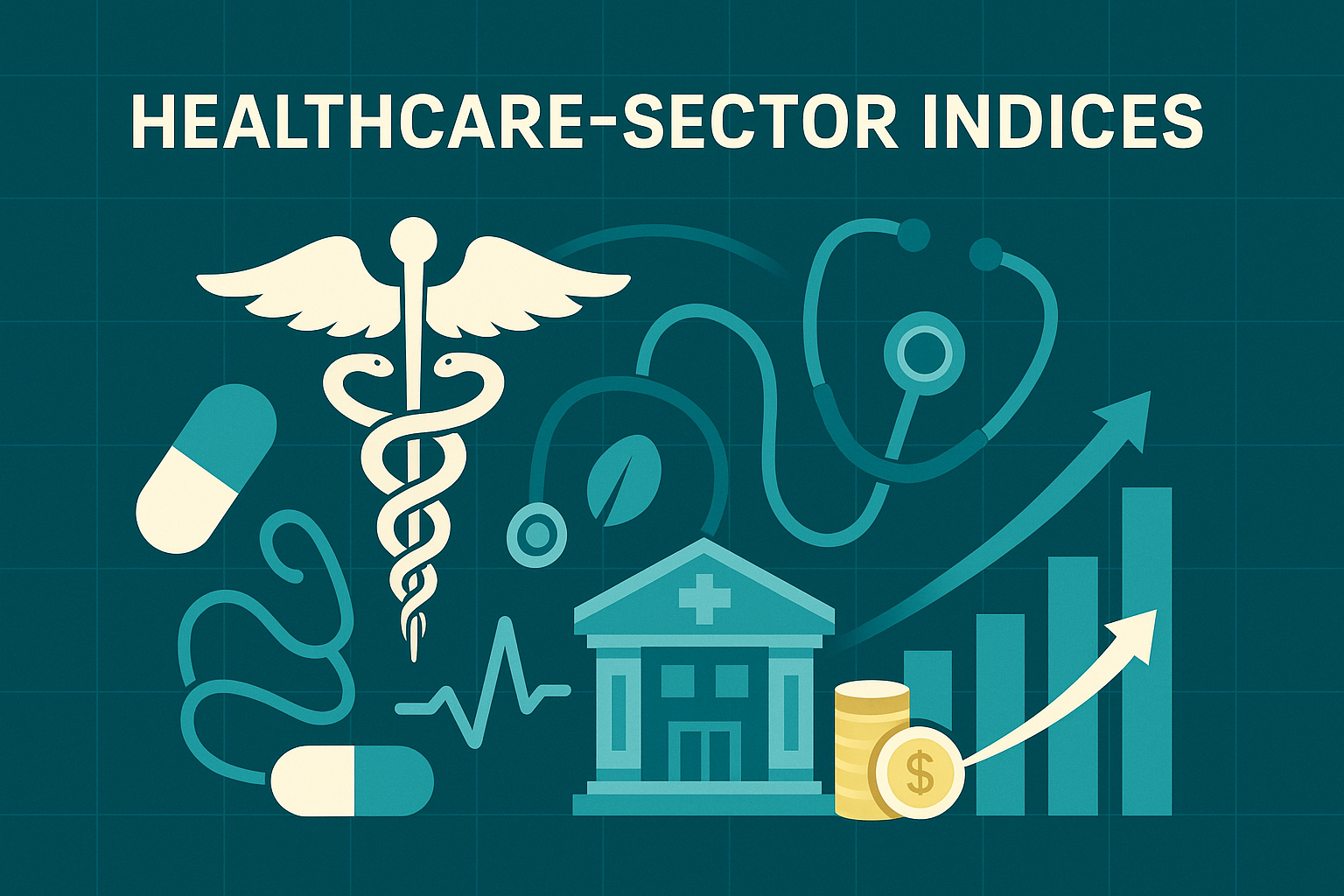Benchmarks that carve global markets into drugmakers, medical-device innovators, biotech researchers and healthcare-service providers—thus enabling investors to track, compare, and allocate capital to one of the world’s most defensive, yet constantly innovating, industries.

1. Why Healthcare Gets Its Own Indices
First and foremost, spending on medicines and care tends to rise regardless of economic cycles; therefore, many investors treat healthcare as a core defensive allocation. However, because new drugs, devices and reimbursement rules reshape the landscape every year, traditional broad-market indices don’t always capture the sector’s nuanced risk–return mix. Consequently, dedicated healthcare indices emerged to provide clearer signals and targeted products.
2. Major Benchmarks at a Glance
| Index | Coverage & Weighting | Distinctive Feature |
|---|---|---|
| S&P 500 Health Care | ~65 U.S. large-caps, float-cap weighted | Low 0.9 β to S&P 500; stalwarts like J&J, UnitedHealth dominate |
| MSCI World Health Care | ~270 DM stocks, 23 countries | Sector-neutral vs. MSCI World; includes big Euro pharma |
| MSCI EM Health Care | ~80 EM names | Captures China A-share drug makers and India generics |
| Nasdaq Biotechnology® (NBI) | ~375 U.S.-listed biotechs, modified-cap | High-beta growth proxy; small caps get 0.1 % floor weight |
| Dow Jones U.S. Medical Equipment | 95 device makers, cap-weighted | Pure-play on pacemakers, imaging and surgical robots |
| S&P Global Health Care ESG Leaders | Top ESG-rated names per industry | Removes low-scoring pharma litigants |
Collectively, these indices span blockbuster pharma, venture-stage gene-editing and everything in between.
3. Construction Themes
- GICS Classification: Almost every healthcare index begins by matching stocks to the GICS “Health Care” sector (code 35).
- Purity Screens: Biotech indices often require ≥ 90 % revenue from R&D-stage therapeutics, thereby excluding diversified conglomerates.
- Capping Rules: Because mega-caps like Johnson & Johnson or Novo Nordisk could otherwise eclipse peers, many indices cap single-stock weight at 8–10 %.
- Refresh Cadence: Most healthcare indices rebalance quarterly; biotech lists also run fast-entry reviews so hot IPOs don’t wait months to join.
4. Performance Pulse (5-yr Annualised, USD to April 2025)
| Index | Return | Volatility |
|---|---|---|
| S&P 500 Health Care | 10.1 % | 14 % |
| MSCI World Health Care | 9.6 % | 13 % |
| Nasdaq Biotechnology | 7.8 % | 24 % |
| DJ U.S. Medical Equipment | 12.4 % | 18 % |
Therefore, device makers have outpaced large-cap pharma, while biotech delivered higher risk for modestly lower reward after 2021’s risk-off rotation.
5. Investor Use-Cases
- Defensive Core Sleeve: Large-cap pharma indices provide steady dividends and low GDP sensitivity.
- Growth Tilt: Biotech and med-tech benchmarks add innovation beta without single-drug binary risk.
- Thematic Exposure: Oncology, gene therapy and digital health sub-indices slice the sector even finer.
- Benchmarking Active Funds: Healthcare stock-pickers compare alpha versus the appropriate sector yard-stick.
- ETF Building Blocks: Products like XLV (S&P Health Care), IBB (Nasdaq Biotech) and XHE (equal-weight med-tech) make index tracking accessible.
6. Strengths & Caveats
| Strengths | Caveats |
|---|---|
| Transparent, rules-based baskets | Patent cliffs and FDA setbacks can whipsaw returns |
| Low correlation to cyclical sectors | Regulatory or pricing reforms create sector-wide drawdowns |
| Global & EM variants diversify pipeline risk | Currency moves affect non-USD indices |
| ESG overlays screen out headline controversies | Clinical-trial opacity can still hide tail-risk |
7. Forward-Looking Catalysts
- GLP-1 Obesity Drug Boom: Sales could hit US $80 bn by 2030, reshaping pharma weights.
- AI Drug Discovery: Accelerated molecule design may spawn new biotech entrants at the next reconstitution.
- Value-Based Care: Indices may tilt toward managed-care and telehealth names as payment shifts reward outcomes over volume.
- Global Aging: EM indices likely add elder-care and diagnostics firms as demographic pressure mounts.
Key Takeaways
Healthcare indices transform a complex, regulation-heavy universe into investible slices—spanning defensive pharma, high-growth biotech and device innovators. By understanding construction rules, weight caps and review cycles, investors can select the benchmark that best matches their return objectives, risk tolerance and thematic convictions.